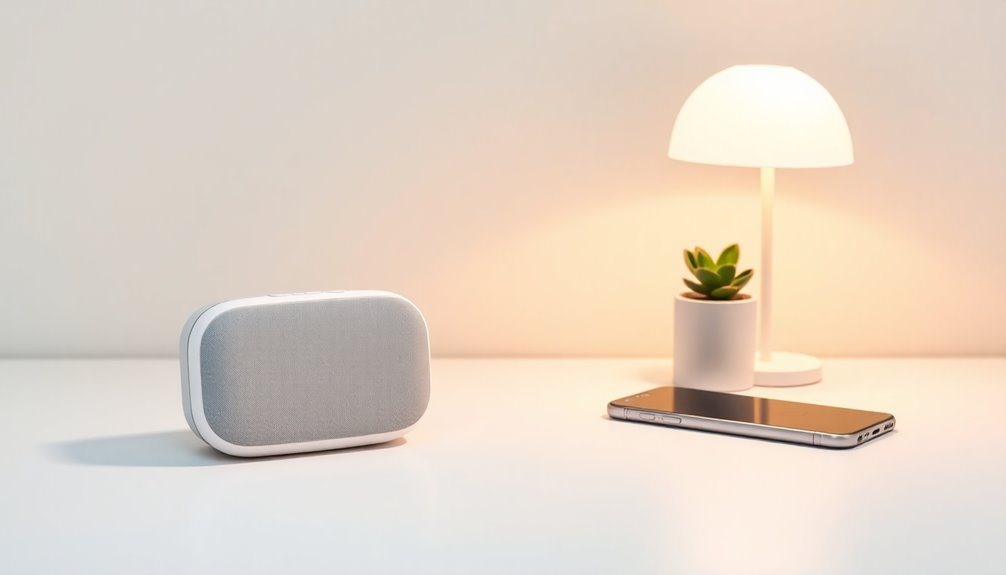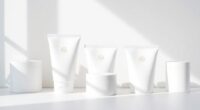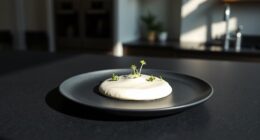Minimalism is shaping product design in 2025 by prioritizing clarity and functionality. You'll see designs that reduce clutter while enhancing usability through intuitive navigation. Technology plays a key role; AI and AR create hyper-personalized experiences just for you. Brands are embracing sustainable materials with customization options, ensuring accessibility for all users. As you explore this trend, you'll discover how minimalism continues to evolve and influence the future of product design.
Key Takeaways
- Minimalism in 2025 emphasizes functional designs that prioritize user clarity and efficient navigation, enhancing overall user experience.
- The integration of AI and AR technologies enables hyper-personalized experiences tailored to individual user preferences and behaviors.
- Sustainability remains a key focus, with product designs utilizing eco-friendly materials and promoting long-term usability over transient trends.
- Maximal minimalism emerges, blending simplicity with bold colors and textures, creating engaging yet non-overwhelming product designs.
- User feedback will play a critical role in design iterations, ensuring products meet diverse customer needs through inclusive and accessible features.
The Evolution of Minimalism in Design

Minimalism in design has come a long way since its roots in the Bauhaus movement of the early 20th century, evolving to meet the needs of a digital age.
Today, minimalist design emphasizes clarity and functionality, enhancing user experiences across various platforms. You'll notice that design principles now focus on functional minimalism, allowing for efficient navigation and engagement.
Minimalist design today prioritizes clarity and functionality, enhancing user experiences through efficient navigation and engagement.
Personalization is key, as users seek tailored interactions that resonate with their preferences. Additionally, inclusive design guarantees accessibility for diverse audiences, making digital product design both user-centric and welcoming.
As technology advances, the minimalist ethos becomes even more relevant, supporting fast-loading and seamless experiences that reduce visual clutter while still appealing to our desire for personalization. This is similar to how color accuracy in home cinema projectors enhances the overall image quality for a more engaging viewing experience.
Defining Minimalism 2.0
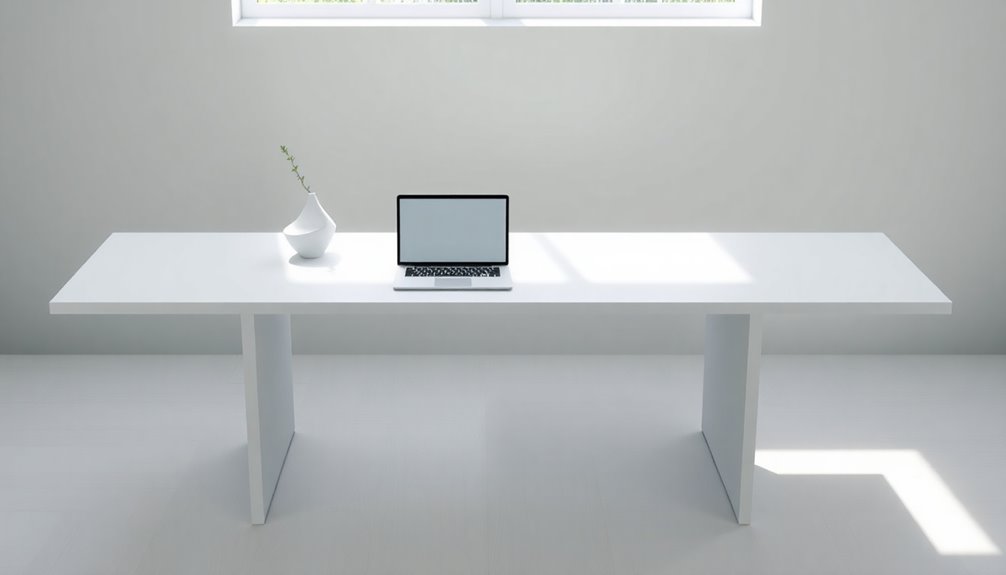
Minimalism 2.0 redefines your approach to design by prioritizing user-centric principles that boost clarity and efficiency.
You'll see how integrating technology enhances user experience, making interactions seamless and engaging.
Let's explore the key principles that shape this modern take on minimalism. Embracing solitude fosters deeper self-reflection and mindfulness, which can be reflected in thoughtful product design.
Key Principles Overview
As you explore the evolution of design, you'll discover that the principles of Minimalism 2.0 focus on enhancing usability and user experience. This approach emphasizes functional minimalism by prioritizing essential features and eliminating clutter. Personalization is key, allowing tailored user experiences that adapt to individual preferences.
Microinteractions provide subtle feedback to improve usability without overwhelming users. Inclusive design guarantees products cater to diverse needs, fostering equitable user experiences. Ultimately, clarity and efficiency drive designers toward intuitive navigation and streamlined interfaces across platforms. Additionally, the integration of Herbal Infusion Machines reflects the trend towards multifunctional tools that simplify complex tasks in the kitchen.
| Principle | Description |
|---|---|
| Functional Minimalism | Prioritizes essential features, removes clutter |
| Personalization | Tailors experiences to individual preferences |
| Microinteractions | Offers subtle feedback for improved usability |
| Inclusive Design | Guarantees accessibility for diverse needs |
User Experience Enhancement
While traversing the digital landscape, you'll find that embracing the principles of Minimalism 2.0 greatly enhances user experience. This approach prioritizes functional minimalism, reducing visual clutter and focusing on essential features that align with your goals.
With UK consumers spending nearly seven hours online daily, minimalist designs facilitate intuitive navigation, keeping you engaged while reducing cognitive overload. Key elements like personalization and microinteractions create hyper-personalized experiences, offering tailored feedback that improves usability.
Additionally, the rise of mobile-first design emphasizes clarity and efficiency, catering to your need for seamless experiences on mobile devices. By 2025, expect Minimalism 2.0 to further adapt to your behavior and preferences, ensuring an optimized user experience. Furthermore, the integration of AI tools for real-time performance tracking will enable designers to continuously refine elements based on user engagement metrics.
Technology Integration Impact
With technology evolving at a rapid pace, the impact of integration in Minimalism 2.0 is reshaping product design to prioritize user needs.
Designers are leveraging technology advancements like Augmented Reality (AR) to create hyper-personalized experiences that enhance usability while maintaining a clean aesthetic. This approach emphasizes functional minimalism, focusing on essential features and user-centric interfaces, which leads to increased engagement.
Progressive Web Apps (PWAs) play an essential role, offering fast loading times and offline functionality, aligning with the minimalist goal of efficiency. Additionally, the emphasis on responsive design guarantees a seamless user experience across devices, catering to the growing mobile traffic and enhancing overall satisfaction.
Furthermore, the integration of Intelligent Tutoring Systems can facilitate personalized learning experiences, aligning with the minimalist ethos of enhancing user interaction without unnecessary complexity.
Minimalism 2.0 is truly a game-changer in user experience (UX) design.
Key Principles of Minimalism 2.0
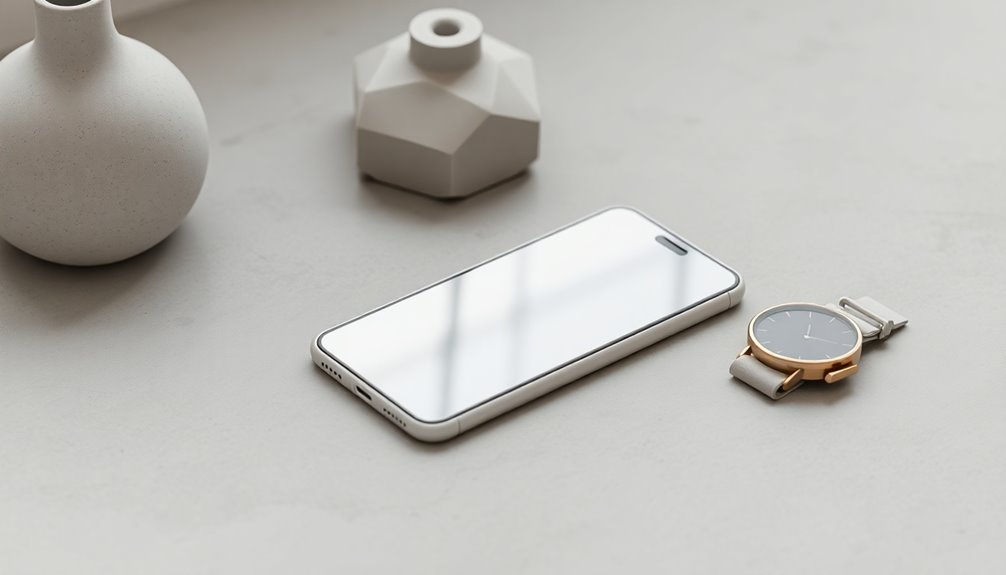
In Minimalism 2.0, you'll find that functional minimalism is all about prioritizing clarity and efficiency in design.
Personalization plays a key role, allowing you to tailor experiences based on your preferences and behaviors.
This approach not only enhances user engagement but also streamlines interactions, making your experience smoother and more enjoyable. Additionally, adopting continuous learning can further refine the design process, ensuring that products evolve in alignment with user needs and preferences.
Functional Minimalism Approach
Functional minimalism transforms product design by prioritizing simplicity and efficiency, ensuring you have a seamless user experience. This approach focuses on essential features, eliminating distractions while promoting clarity of design.
You'll benefit from intuitive navigation and straightforward layouts that guide you effortlessly through digital environments.
Microinteractions play an important role, providing subtle feedback that enhances usability without overwhelming you.
Additionally, functional minimalism emphasizes inclusive design, making products accessible to diverse user needs. By leveraging user data, it crafts personalized experiences that resonate with your individual preferences and behaviors.
Ultimately, this user-centric design philosophy not only improves usability but also creates a deeper connection between you and the product, enriching your overall experience. Moreover, self-care practices are being integrated into product design, encouraging users to prioritize their well-being while engaging with technology.
Personalization in Design
As personalization becomes a cornerstone of Minimalism 2.0, it transforms how you interact with products by adapting to your unique preferences and behaviors.
Emphasizing user experience through adaptive interfaces, brands now create tailored environments that resonate with you.
Here are key aspects of this trend:
- Customization Options: Personalize landing pages and product suggestions.
- User-Centric Design: Develop experiences that reflect your identity.
- Simplicity and Functionality: Maintain a clean design while addressing complex needs.
- Brand Loyalty: Foster trust through relevant, engaging interactions.
Additionally, incorporating mindfulness practices into the design process can enhance user attention and satisfaction.
The Impact on User Experience
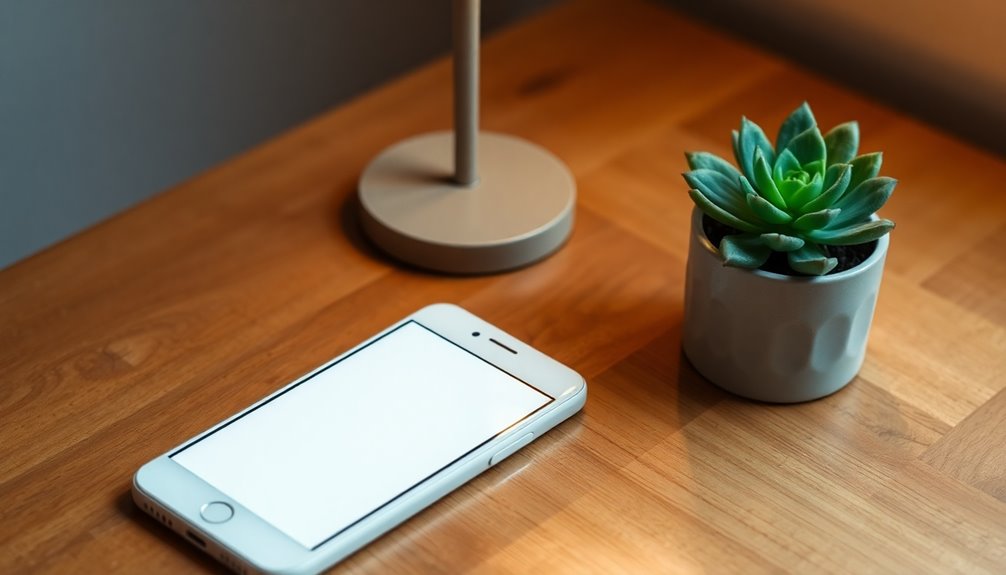
While embracing minimalism in product design can seem straightforward, it profoundly transforms user experience by promoting clarity and simplicity. By reducing cognitive load, minimalist designs minimize distractions, allowing you to engage more deeply with products.
The shift towards mobile-first design guarantees that interfaces are streamlined for your smartphone, creating frictionless experiences that cater to your on-the-go needs. User-centric designs enhance usability by incorporating accessibility features like clear typography and intuitive navigation, making it easier for everyone to interact with the product.
Additionally, the integration of micro-interactions provides immediate feedback, guiding you through your journey and fostering a sense of control. Ultimately, these elements lead to quicker decision-making and increased satisfaction, enhancing your overall user experience. Furthermore, optimizing site speed through technical SEO practices can significantly improve user engagement and retention.
The Role of Technology in Minimalism
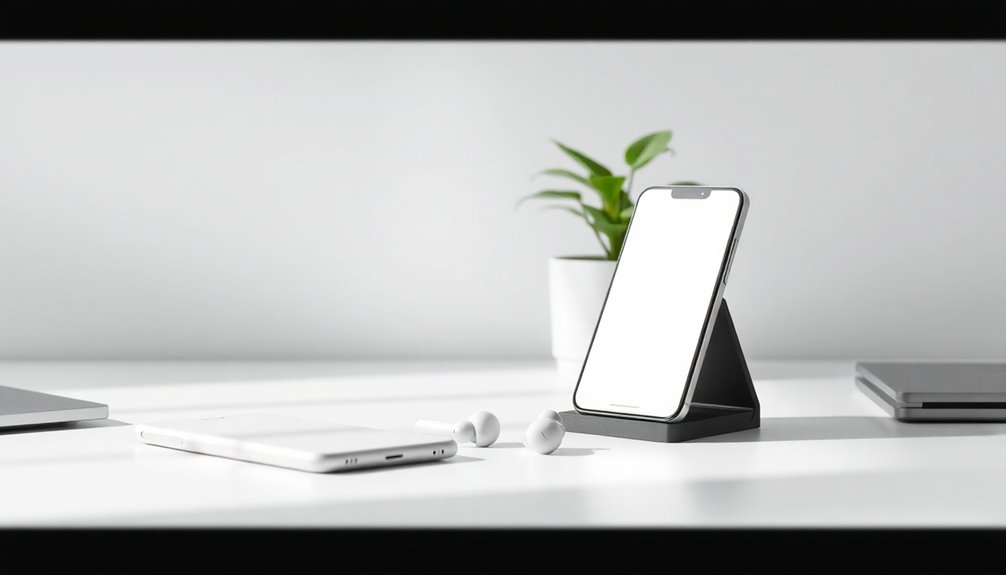
As you explore Minimalism 2.0, you'll notice how AI-driven personalization transforms user experiences, tailoring content to your preferences.
Augmented reality also enhances this minimalist approach, merging digital elements with the physical world for better usability.
Together, these technologies create seamless interactions that prioritize clarity and function. Additionally, the rise of decentralized applications allows for more user control and data ownership, aligning perfectly with minimalist principles.
AI-Driven Personalization Effects
Embracing AI-driven personalization in product design can transform the way you interact with technology, creating experiences that resonate with minimalist principles.
Here are four key effects you can expect:
- Enhanced Usability: Dynamic user interfaces adapt their layouts in real-time based on user behavior, streamlining interactions.
- Reduced Cognitive Load: AI tools automate support, making navigation simpler and more intuitive.
- User-Centric Designs: Data-driven insights help designers create uncluttered, efficient products tailored to your needs.
- Adaptive Interfaces: Interfaces that reflect your individual identity while minimizing unnecessary visual elements.
Augmented Reality Enhancements
AI-driven personalization sets the stage for augmented reality (AR) enhancements, transforming product design into an immersive experience.
With AR, you can visualize products in real-time, making it easier to engage with brands before you purchase. This technology embraces minimalist design by providing interactive elements that deliver essential information without cluttering your interface.
As you customize and interact with products, your user experience becomes personalized, aligning with the Minimalism 2.0 focus on user-centric design. Brands are leveraging AR to create interactive marketing campaigns that enhance brand identity through engaging visual storytelling.
However, designers face the challenge of balancing functionality with aesthetics, ensuring that AR features elevate usability without overwhelming you, truly embodying the core principles of minimalism.
Sustainability in Minimalist Design
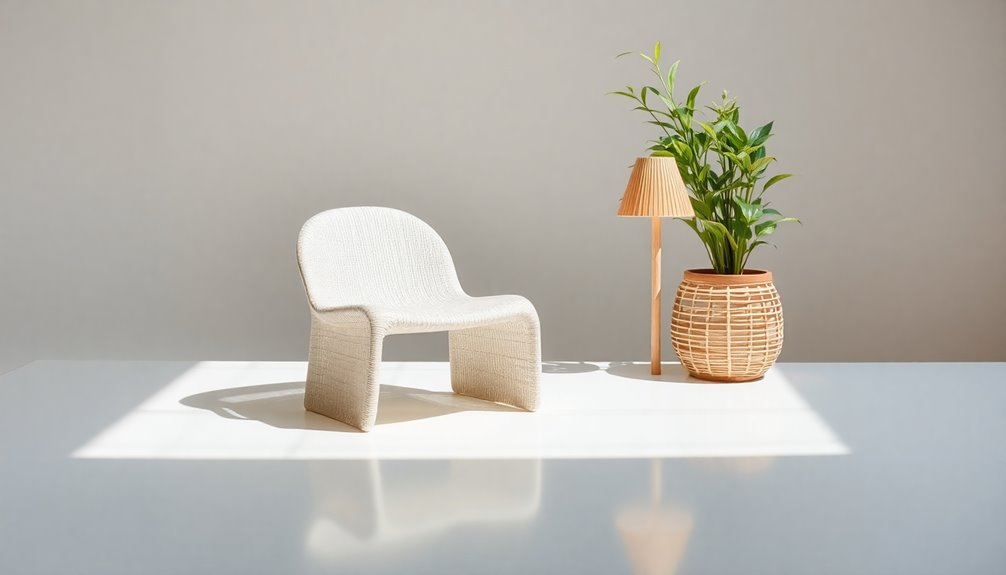
While many design trends come and go, sustainability in minimalist design is here to stay, prioritizing eco-friendly materials and energy-efficient practices. This approach not only reduces environmental impact but also maintains aesthetic appeal.
Here are four key aspects to reflect upon:
- Use of recyclable materials in packaging to align with minimalist principles.
- Focus on long-term usability, creating functional products that resist short-lived trends.
- Streamlining user workflows to optimize energy efficiency in digital interactions.
- Enhancing market appeal by resonating with the growing eco-conscious consumer base.
Customization and Personalization Trends

How can customization transform your experience in product design? In 2025, you'll witness a significant shift toward hyper-personalized experiences, where user data drives tailored content and intuitive interfaces. Customized design elements, like personalized landing pages, will enhance your journey and set brands apart.
| Key Focus | Impact on Users | AI Tools Utilized |
|---|---|---|
| Customization | Tailored experiences | Real-time adjustments |
| Personalization | Unique interfaces | Dynamic interfaces |
| Accessibility | Inclusive designs | Flexible features |
| Brand Identity | Adaptable logos | Contextual personalization |
With AI tools, designs will adjust seamlessly to your needs, making every interaction feel uniquely yours. Embracing these trends, you'll find accessibility and personalization will redefine your product experiences.
The Rise of Maximal Minimalism
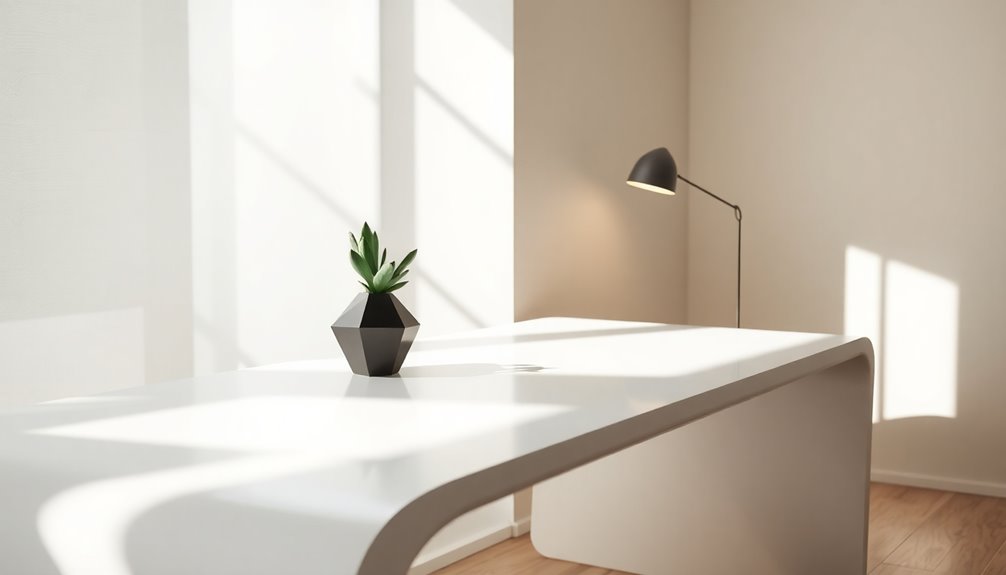
As design evolves, the rise of maximal minimalism emerges, blending simplicity with bold colors and textures to create a more expressive aesthetic.
This trend not only enhances aesthetic appeal but also drives user engagement in exciting ways. Here are four key elements of maximal minimalism:
- Bold Colors – Utilizing vibrant hues to add visual interest.
- Textured Patterns – Incorporating varied textures to create depth while maintaining clarity.
- Essential Features – Balancing simplicity with functionality for usability.
- Unique Identity – Reflecting personality in designs to differentiate brands.
Maximal minimalism captures the essence of modern product design trends, promoting expressive design that resonates with consumers seeking both beauty and practicality.
Maximal minimalism embodies the spirit of contemporary design, merging aesthetic allure with practical functionality for today's discerning consumers.
This approach guarantees that products remain engaging without overwhelming the user.
Case Studies of Brands Adopting Minimalism

Minimalism in product design has become a hallmark of successful brands, showcasing how simplicity can lead to enhanced user experiences. Companies like Apple and Tesla demonstrate how minimalist design philosophies improve functionality and aesthetics, ultimately driving brand recognition. IKEA's focus on simplicity allows users to personalize their furniture, enhancing satisfaction. Similarly, Google's Material Design framework prioritizes straightforward navigation, boosting user engagement. Nike's streamlined branding resonates well with consumers, reinforcing loyalty in a crowded market.
| Brand | Design Philosophy | User Engagement |
|---|---|---|
| Apple | Clean lines, intuitive UI | High user loyalty |
| IKEA | Functionality, simplicity | Increased satisfaction |
| Straightforward navigation | Improved engagement | |
| Tesla | Central touchscreen | Simplified UX |
| Nike | Simple logos, streamlined | Enhanced recognition |
Future Directions for Minimalist Product Design
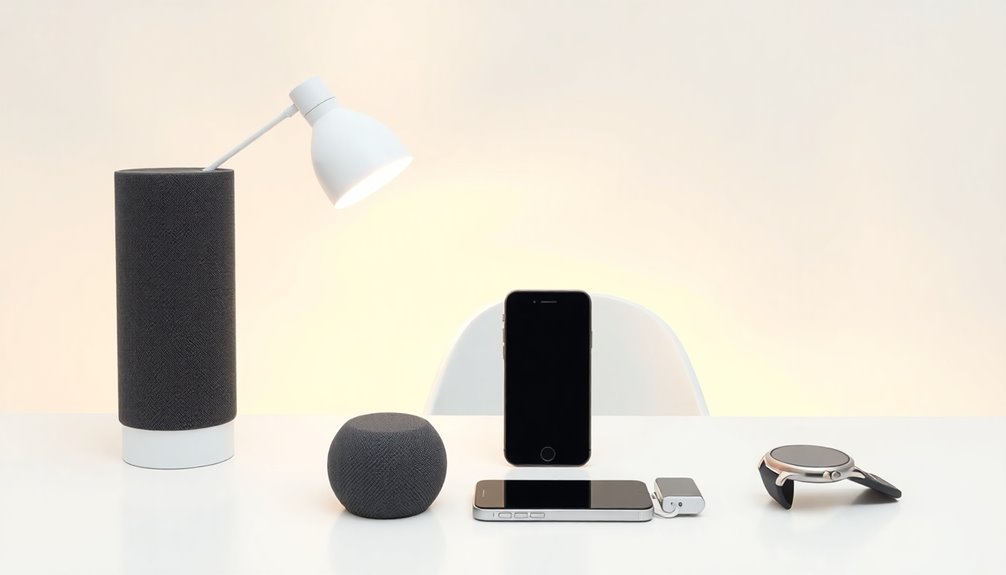
The success of brands embracing minimalism sets the stage for exciting developments in product design by 2025. Here are some key directions to watch:
- Enhanced user experience through intuitive interfaces.
- Real-time personalization powered by AI.
- A commitment to sustainability with eco-friendly materials.
- Integration of motion design for improved usability.
As you navigate this evolving landscape, expect minimalist design to focus on user-centricity, making simplicity paramount.
Brands will prioritize sustainable practices without sacrificing aesthetic appeal.
The rise of motion design will guide your interactions with subtle feedback, enriching your experience.
Ultimately, these trends will create products that aren't only functional but also resonate with your values and preferences.
Embrace the minimalist future ahead!
Frequently Asked Questions
Why Is Minimalism so Popular in Design?
Minimalism's popularity in design stems from its focus on simplicity and functionality, making it easier for you to navigate and engage with products.
In a world filled with distractions, minimalism reduces cognitive load, allowing you to concentrate on what's important.
With mobile-first design becoming essential, clean layouts enhance your user experience.
Plus, minimalism aligns with sustainable practices, appealing to your eco-conscious side.
Ultimately, it creates a clearer, more enjoyable interaction with technology.
What Is the Impact of Minimalist Design?
Imagine walking through a serene, clutter-free room; that's the impact of minimalist design. It clears the chaos, making your experience seamless and enjoyable.
By stripping away unnecessary elements, you can focus on what's essential, improving navigation and satisfaction. This simplicity reduces cognitive overload, allowing you to engage more deeply.
Ultimately, minimalist design doesn't just enhance aesthetics; it transforms usability, helping brands connect better with you in a crowded marketplace.
What Is Minimalism in Product Design?
Minimalism in product design focuses on simplicity and functionality.
You're looking at designs that prioritize essential features, stripping away unnecessary elements to enhance your user experience.
You'll notice clean layouts, intuitive navigation, and effective use of negative space.
By limiting color palettes and using scalable logos, brands communicate their essence clearly.
This approach not only looks aesthetically pleasing but also makes interaction effortless, allowing you to engage with products more effectively.
What Is the Future of the Design Industry?
The future of the design industry looks exciting and dynamic.
You'll see a strong push towards hyper-personalization, with AI tailoring experiences just for you.
Ethical and inclusive design will be paramount, ensuring everyone can access products easily.
Sustainability will become a key focus, pushing for eco-friendly materials.
Plus, you'll enjoy augmented reality features, making interactions more engaging.
Modular design will let you customize your experiences, fostering creativity in both digital and physical spaces.
Conclusion
As we navigate the evolving landscape of minimalism in product design, think of it as a refreshing change, clearing the clutter to reveal clarity and purpose. Embracing Minimalism 2.0 means prioritizing user experience while integrating technology seamlessly. Brands that adopt these principles not only stand out but also resonate deeply with consumers. As we look ahead, expect a harmonious blend of simplicity and sophistication, shaping the future of design in an increasingly complex world.
